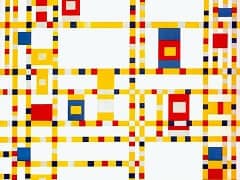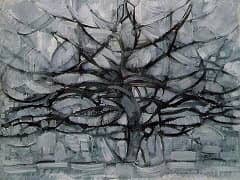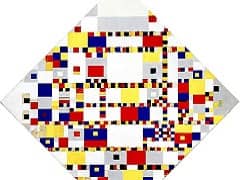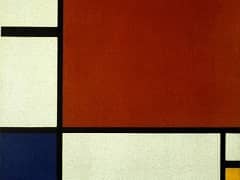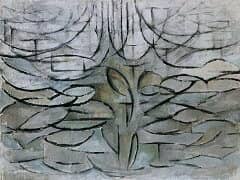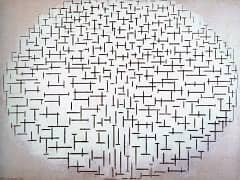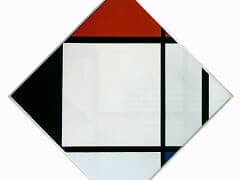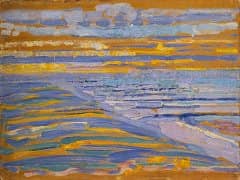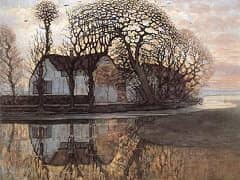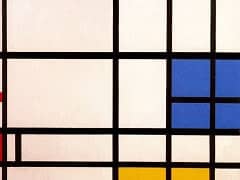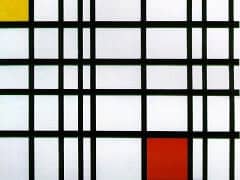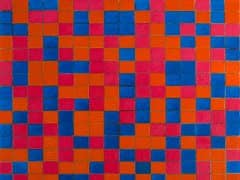Composition with Red Blue and Yellow-Green, 1920 by Piet Mondrian
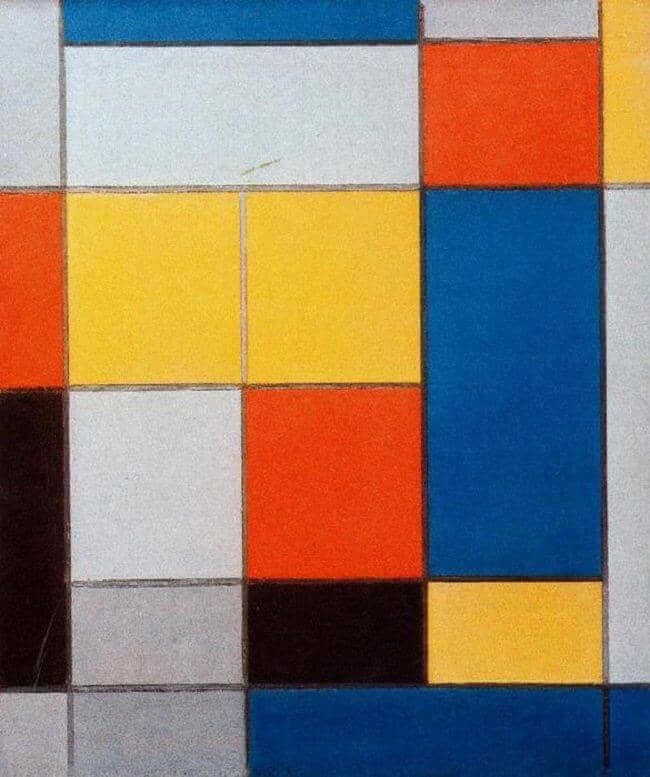
1920 is the year in which Mondrian, once again permanently settled in Paris, published his little book Le Neo-Plasticisme with Leonce Rosenberg, the publisher and art dealer. The principles that he had stated in dialogue form in his essays a De Stijl were condensed in the book into a closely reasoned and convincing argument. Out of the mass of intuitions, experiments, and propositions, a firm system merged. The key to this little book is in the first words, the dedication "aux hommes futurs." With the principles he had discovered in his thirty-year search for a way to express the essence of reality, Mondrian hoped to make visible the harmony, the law, of all Creation, and hereby lead men of the future to a harmony in their lives.
The process of consolidation, of bringing together, that can be observed in the publication of his principles in 1920 coincides with an analogous process in his art. In 1920 Mondrian drew the conclusions from his experiments with form and color of the years just past, experiments illustrated here by the paintings dating from 1917 to 1919, and in this way he arrived at a pictorial solution hat was to be the basis of most of his work until the beginning of the next decade. The work reproduced here is one of he paintings that in a way may be said to be the archetype of the future development. It has obvious connections with he 1918 and 1919 works. It is also related to this painting, and to the Composition: Checkerboard, Dark Colors, by the fact that the gray and white areas are tinted with the same colors used in the adjacent color blocks. Incidentally, the colors depart slightly from the primary shades; this is particularly noticeable with the yellow, which has become a yellow-green, almost a lime green.

